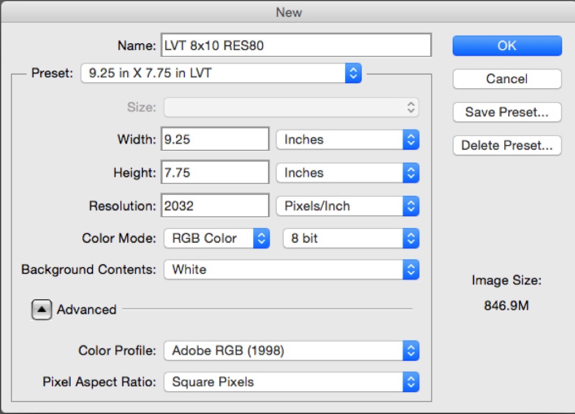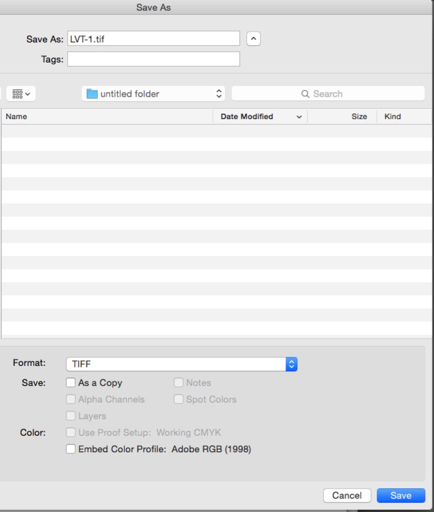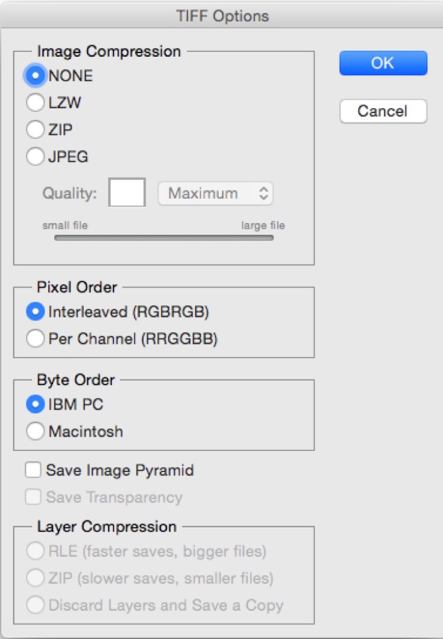LVT 1620 FAQ
What is an "LVT" print?
The LVT is an ultra-high resolution, continuous tone Film Recorder. It exposes digital files directly onto E-6, C-41 and B&W films.
LVT is an acronym for "Light Valve Technology", which was the original exposure moderating mechanism when the film recorder was first introduced by a partnership between Kodak and Light Valve Technology (LVT).
The business was sold to Durst around the year ~2000.
The current models (ie Rhino, 1620) use LED's to expose the film, which gives a much nicer print.
How High is the Resolution of our LVT?
The Durst LVT uses fixed optical resolutions when exposing the film. The resolutions are referred to as RES numbers.
Lower RES's are available on the device but are not used for film. The RES is the number of pixels per millimeter (MM).
RES80 exposes the film at 80 pixels per millimeter or 2,032 pixels per inch (PPI).
That really is a lot of pixels per MM! As an example, the LVT uses a 30x microscope to allow us to focus the beam.
We have to use one of the largest pixel settings just to be able to see it.
Even with the assistance of the 30x scope, you cant see the RES 40 or RES 80 pixels.
The prints are so tight that you will never see the individual pixels on the print. They are truly amazing prints to see!
The ultra-high resolutions are enhanced by the continuous tone nature of film. The LVT uses film to its fullest potential.
Continuous tone film recorders offer extremely smooth gradations and subtle transitions that are not possible on other devices.
There are no dots as in inkjet prints and no scans lines as in CRT film output.
LVT 1620 Output File Specs
LVT File Prep:
Create your files using the Adobe RGB 1998 profile, color correct and then save the file as an 8 bit RGB TIFFs (IBM Tiff format).
The Tiffs must be flattened, no alpha channels with No Profiles Embedded. If a profile is embedded the LVT will reject the file.
The actual imaging area on the LVT is slightly smaller than the nominal film size.
Please take this into consideration when creating your file. Please use the table below.
Make sure to indicate how you would like the file to appear ie. vertical or horizontal in a 4x5 or 8x10 if its smaller.
Also indicate either a white or black background if the size of the image does not come to the edge.
Create your files for the desired output resolution and film size.
RES 80 = 2032 DPI
RES 60 = 1524 DPI
RES 40 = 1016 DPI
RES 24 = 610 DPI
RES 20 = 508 DPI
RES 15 = 381 DPI
4.00 x 5.00”
5.00 x 7.00"
8.00 x 10.00"
8.50 x 11.00"
11.00 x 14.00"
7.00 x 17.00"
14.00 x 17.00"
12.00 x 18.00"
8.00 x 19.385"
12.00 x 19.385"
15.875 x 19.385"

Sample: Creating a new image for LVT RES 80 Output in Adobe Photoshop® CS6

Sample: Saving a new image for LVT RES 80 Output in Adobe Photoshop® CS6, uncheck embedded profile and match TIFF options
LVT 1620 Resolution Chart
When creating the file for LVT Output, please size them according to the chart below.
RES 80 = 2032 DPI
RES 60 = 1524 DPI
RES 40 = 1016 DPI
RES 24 = 610 DPI
RES 20 = 508 DPI
RES 15 = 381 DPI
4.00 x 5.00”
5.00 x 7.00"
8.00 x 10.00"
8.50 x 11.00"
11.00 x 14.00"
7.00 x 17.00"
14.00 x 17.00"
12.00 x 18.00"
8.00 x 19.385"
12.00 x 19.385"
15.875 x 19.385"
LVT Film Stocks
LVT 1620 Film Stocks
The LVT 1620 can image files on Color Negative (C-41), Color Positive (E-6), B&W negative films and RA-4 papers/films.
B&W Negative - Ilford FP4+
FujiClear
FujiTrans
If you require a different film stock, please Contact Us.
We can potentially calibrate the LVT to any RA-4, Color or B&W film stock and processing routine.
The setup fee for a film stock not listed if you provide the film is $500.
Please Note: A minimum of 5-10 sheets of 8x10/16x20 film is required to complete the calibration.
The film should all be from the same emulsion lot. The film used for imaging the final files should also be the same emulsion lot.
If we will need to source the film, the setup fee can be up to $1000, depending on how expensive the film is and how much we need to complete the calibration.
B&W 8x10 Positives are also available, please Contact Us for more information.
Thank you for visiting our LVT 1620 FAQ. If you have any questions, please contact us anytime.
All information contained on this page is ©2006-2025 Photographer At Large / PrePress Express and may not be reproduced without our written consent.
